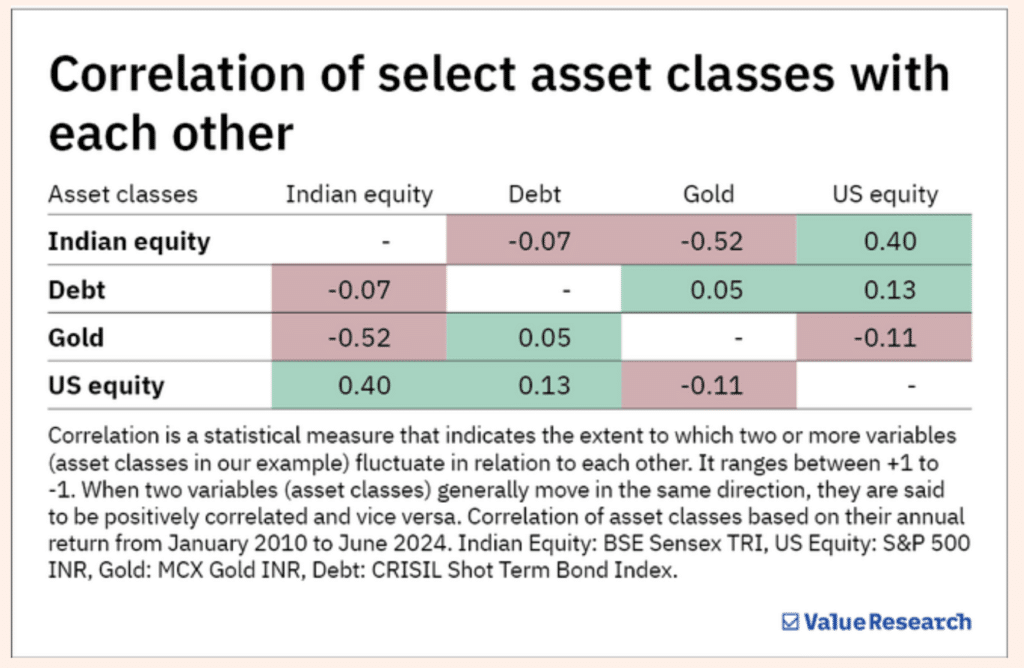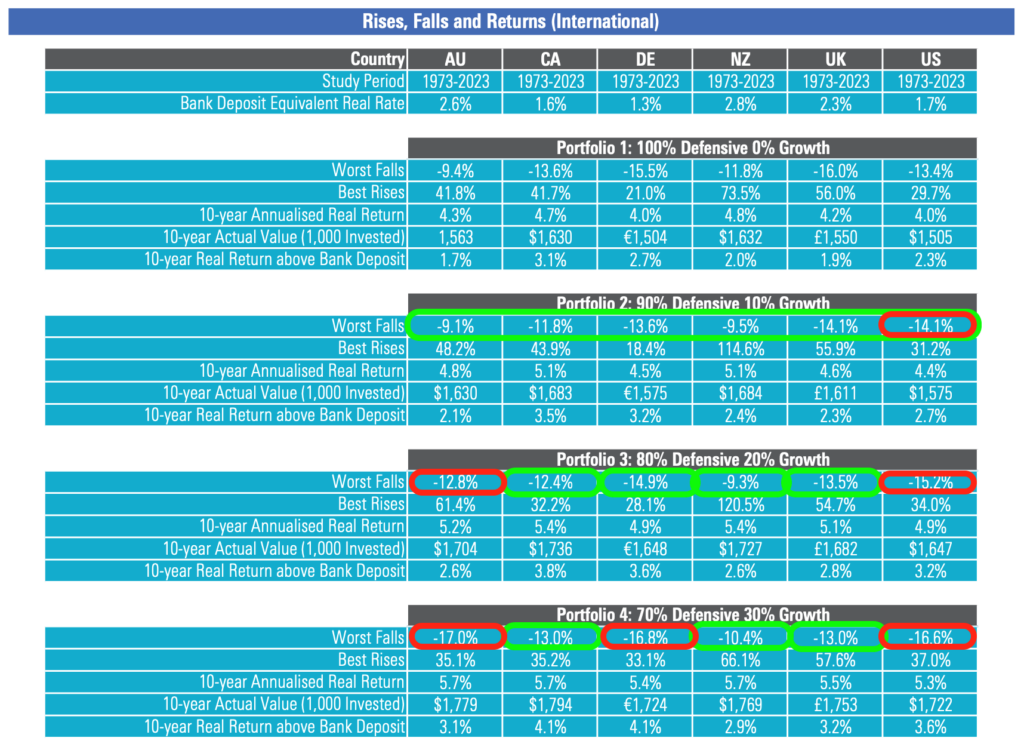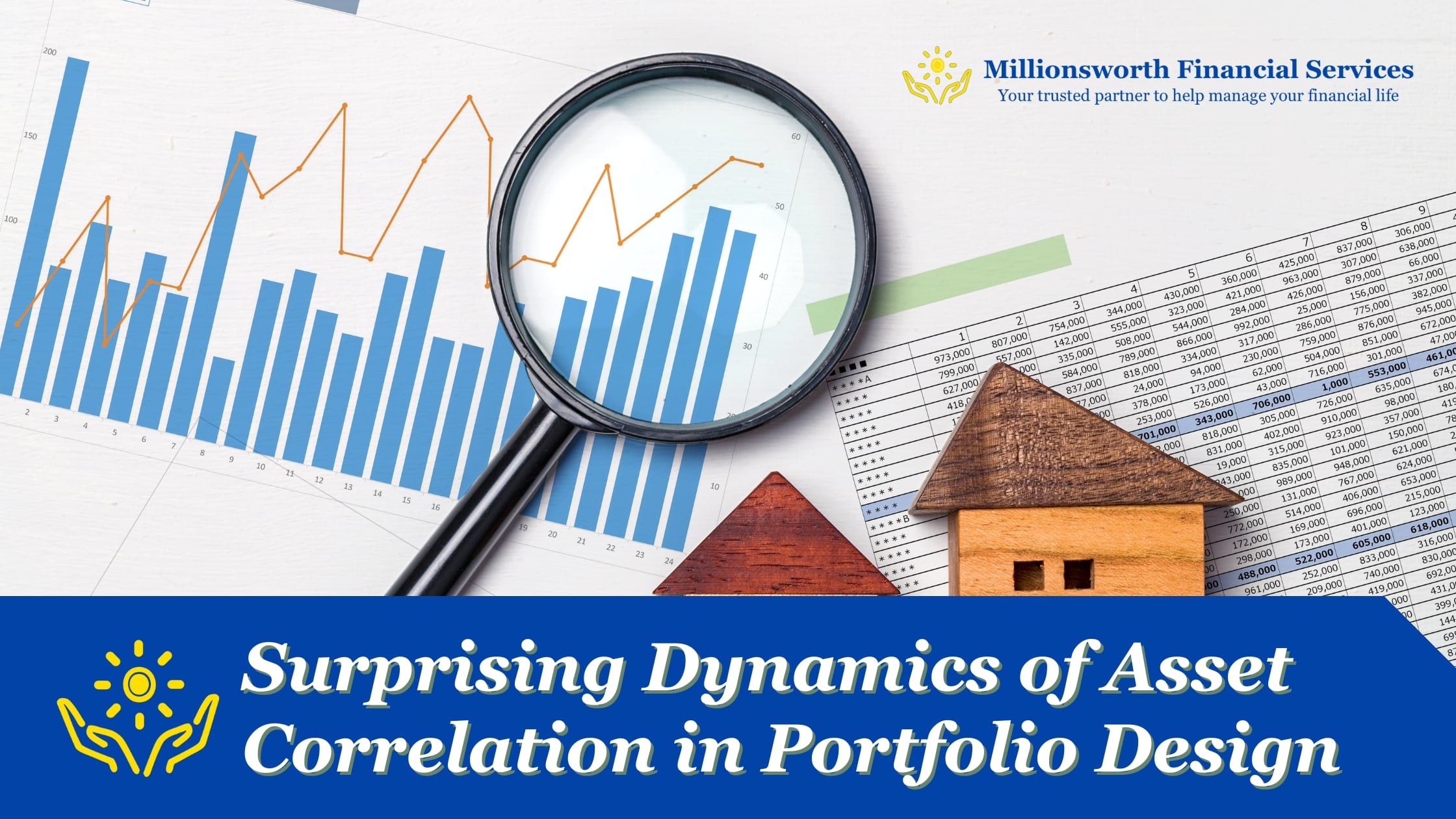Investing is often seen as a blend of art and science. The science behind this approach is known as asset allocation, a strategy that helps investors achieve reasonable returns while managing risk over the long term.
Understanding Asset Correlation in Portfolio Design
In the world of investing, correlation refers to the relationship between the movements of different asset classes. For instance, when stocks and bonds have a high correlation, their prices typically rise and fall together. On the other hand, when these asset classes have a low or negative correlation, one might increase in value while the other decreases. Mastering asset allocation is all about understanding these correlations and using them to construct a balanced portfolio that can weather various market conditions. A common misconception is that adding equities (stocks) to a debt-heavy portfolio automatically increases risk. While it’s true that equities tend to be more volatile than bonds, this doesn’t necessarily mean that the overall portfolio becomes riskier. In fact, by strategically combining different assets, the downside risk of the portfolio can actually decrease during unfavourable market scenarios, while the potential for returns improves.

The Power of Combining Different Asset Classes
To illustrate the effectiveness of asset allocation and Surprising dynamics of assets correlation in portfolio diversification, let’s examine past 51 years of data from six different countries. Many investors believe that a portfolio composed entirely of defensive assets, like bonds, is inherently safe and steady, especially during market downturns. The assumption is that such a portfolio will experience the least decline when markets are volatile. But what happens if we introduce a small allocation of growth assets, say 10%, into this defensive portfolio?
Surprisingly, in 5 out of the 6 countries data studied, portfolios with 10% growth assets actually fell less during market downturns compared to a 100% defensive portfolio. Additionally, these portfolios also achieved higher average annualized returns. This counterintuitive result shows that including a modest allocation of growth assets can enhance the portfolio’s overall performance, even in challenging market conditions.
When the allocation of growth assets is increased to 20% and 30%, the portfolios of 4 countries and 3 countries, respectively, continued to outperform the fully defensive portfolios. This demonstrates that a diversified mix of assets, even with a higher percentage of growth assets, can provide better outcomes than relying solely on defensive investments. This phenomenon occurs because bonds and equities often do not move in perfect sync. When one asset class underperforms, the other may perform better, thereby reducing the portfolio’s overall risk. This is the core principle of portfolio asset allocation: combining assets with different behaviors to achieve a more resilient and rewarding investment strategy.

Source: Risk and Return Reports from www.riskprofiling.com
The Science of a Balanced Portfolio
Asset allocation is not just a strategy; it’s a disciplined approach to investing that leverages the distinct behaviors of various asset classes. By understanding and applying the principles of correlation, investors can design portfolios that are both balanced and optimized for risk and return.
Think of your portfolio as a well-crafted recipe, where the right mix of ingredients leads to a balanced and satisfying result. In the same way, a thoughtfully allocated portfolio, blending bonds, equities, and other assets, can help you achieve your financial goals with greater stability and confidence.
Conclusion
Portfolio construction is about more than just choosing the right investments; it’s about understanding how different asset classes interact and using that knowledge to create a balanced portfolio. By applying the science behind asset allocation, you can navigate the complexities of the market with greater confidence and success.
As you refine your investment strategy, remember that asset allocation isn’t just a concept—it’s a proven method for managing risk and optimizing returns.



